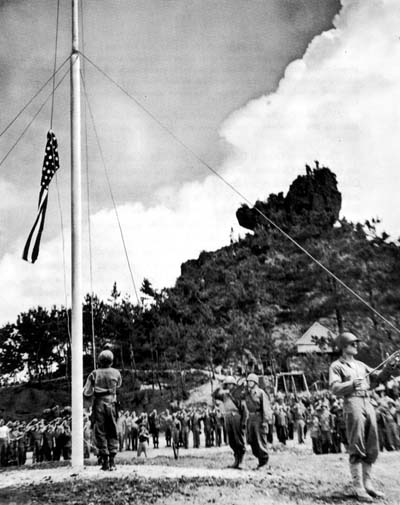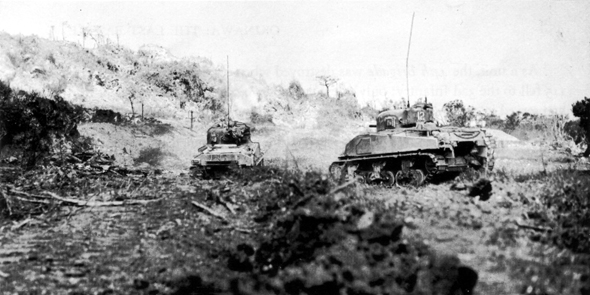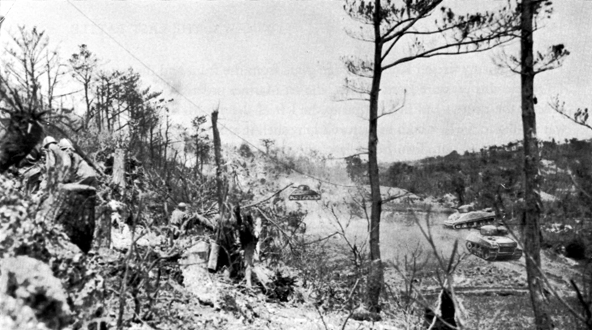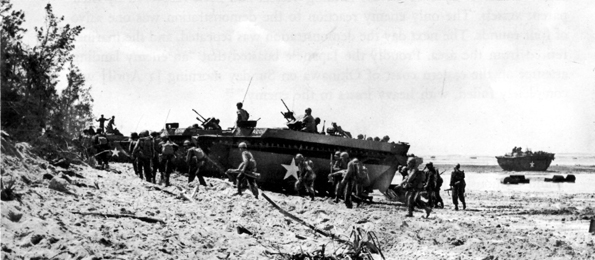I ran across more data on the priority shipping CDL Tanks and deploying Recoilless Rifles for Okinawa that made some of the things I posted my here factually wrong. There was also additional information of the “VT” proximity fuse in US Army artillery.
Taken together, what didn’t make it to Okinawa would amount to a technological surprise for the Japanese defending the beaches of Kyushu, had the A-bomb failed to get a surrender.

The M3 CDL tanks were assembled at Rock Island Arsenal. Instead of a main gun turret the tank chassis mounted a steel box containing a 13 million candle power carbon arc lamp backed by mirrors to focus the beam, a machine gun and fake cannon. A 10Kw generator was mounted on the back and run by a power take off from the engine. The 75mm sponson gun was retained. Some 500 M3 CDLs were produced in 1943-44. Some 300 entered US Army service with a few used during the battle for the Ludendorff Bridge at Remagen, Germany. Eighteen CDL arrived on Okinawa in June 1945 after the fighting ended
First, it turns out that the June 1945 arrival of the M3 Grant medium tank based “Canal Defense Light” (CDL) tanks was not based on a April 1945 emergency request during Okinawa fighting like the Pershing, but instead was due to a trip by a US Army Ordnance officer working for 10th Army to Washington DC months earlier.
See below:
ON BEACHHEAD AND BATTLEFRONT
Chapter 23, pages 453-453
Colonel Daniels thought good use could be made of Canal Defense Light tanks. The Japanese in their campaign in Malaya had successfully made end runs at night along the coast, landing tanks from boats, and could be expected to do the same thing along the coast of Okinawa. Against such attacks, the CDL’s with their blinding searchlights might be used to very good effect. General Buckner had never heard of the CDL’s but after having been furnished a description he gave Daniels permission for a flight to Washington to round up a company. When Daniels got to Washington, he found that all of these special tanks had gone to England for shipment to France, but that he might expect some in several months. Accordingly, he put in a request for about 18 or 20 CDL’s, and an officer and men trained in operating them. They did not arrive until late June 1945, after the Okinawa campaign was over.25
.
25. Ltr, Brig Gen Robert W. Daniels to Lida Mayo, 23 Nov 63, OCMH. When the CDL’s arrived Daniels got one ashore and showed it to Gen. Joseph W. Stilwell, who had succeeded Buckner as Commanding General of Tenth Army. Stilwell was impressed. Ibid.



